
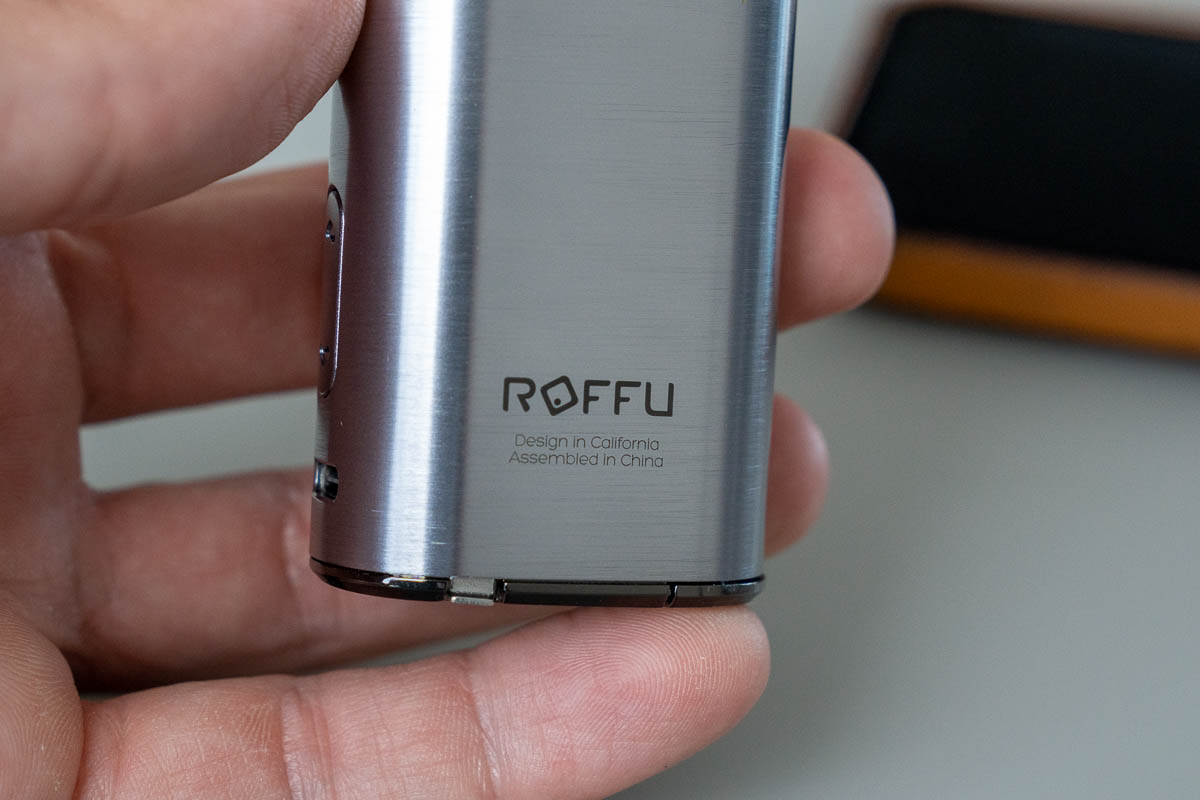
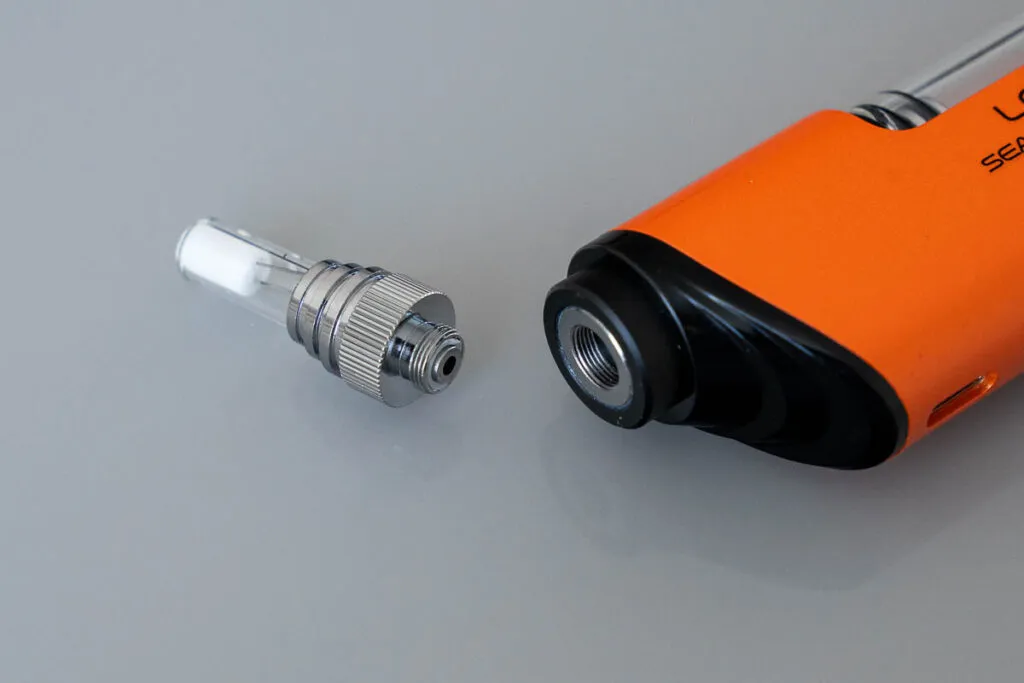
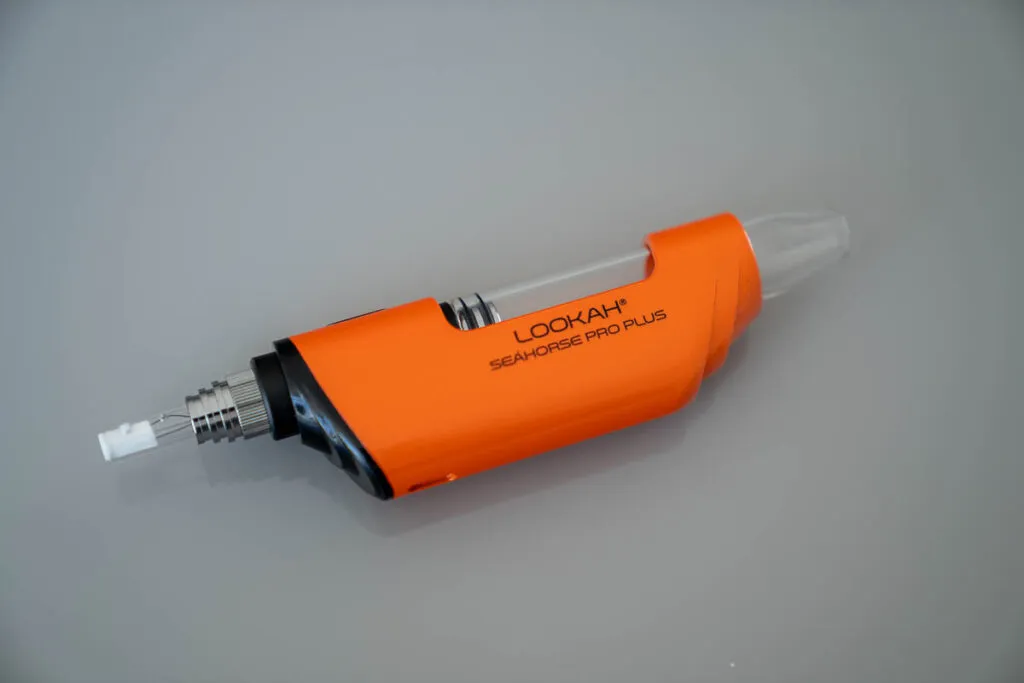
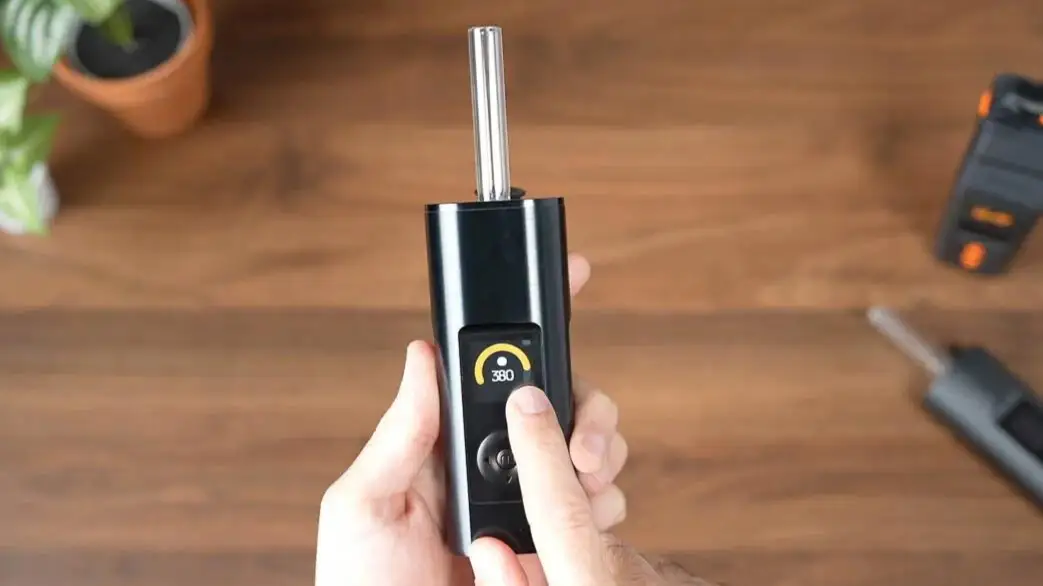
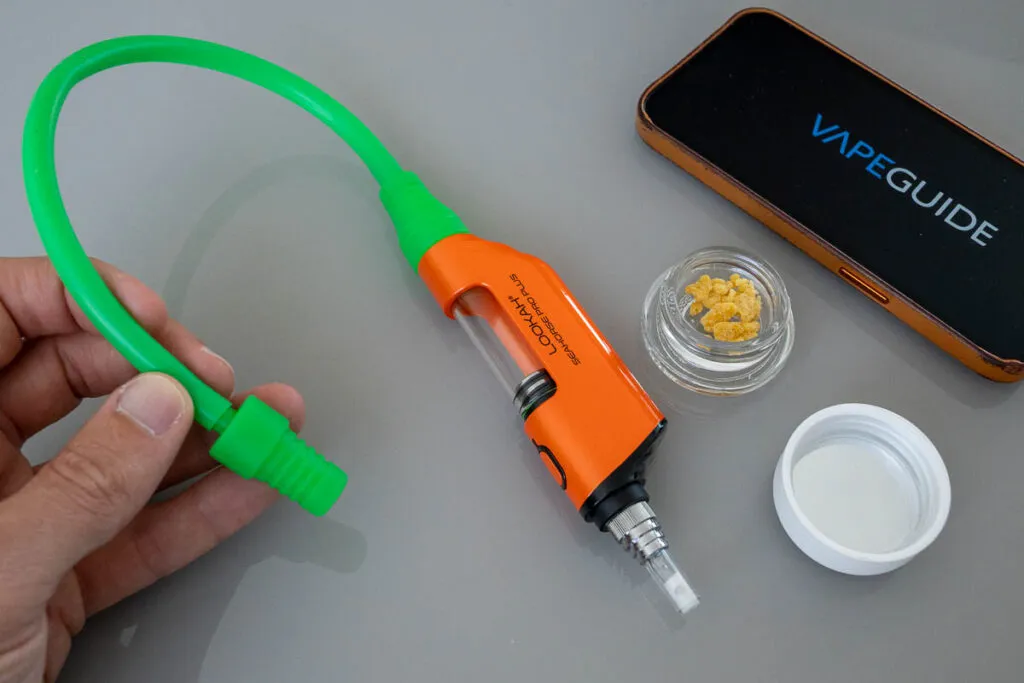
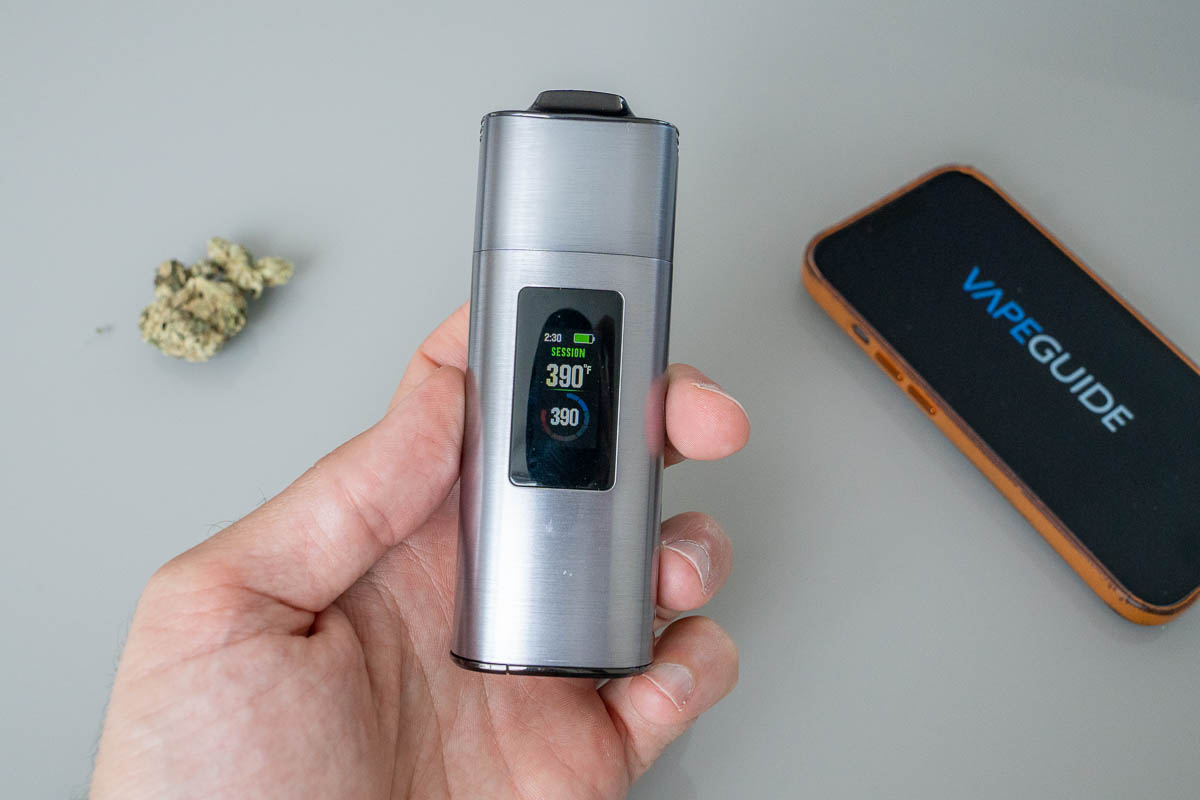

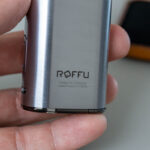
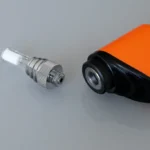
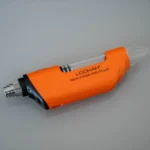
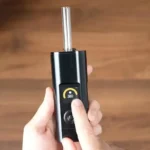
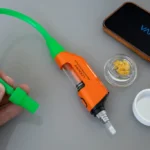
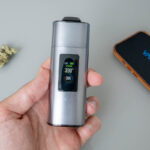
Comparison
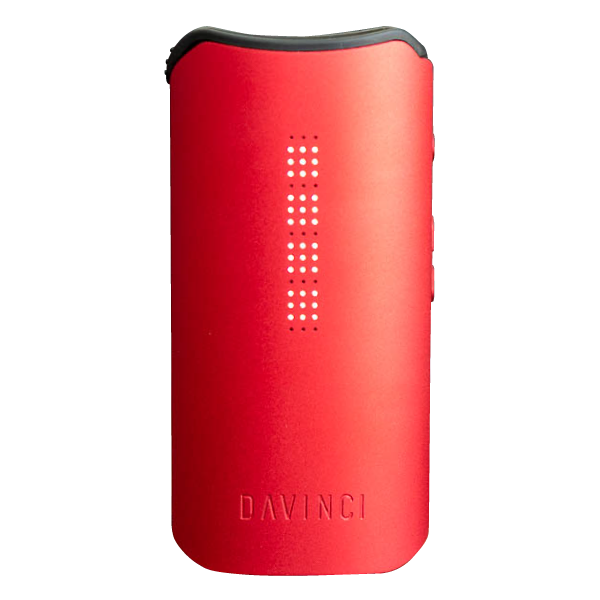
IQC
|
||
|---|---|---|
| Score (1-5) |
- Current Review |
3.1 |
| Retail Price |
$229.00 |
|
| Release Date | July 2021 | |
| Compatible With | - | Dry Herb |
| Heating Method | - | Conduction |
| Body Material | - | Aluminum |
| Mouthpiece Material | - | Glass |
| Heat Up Time | - | 20-30 |
| Precise Temp Control | - | ✓ |
| Temperature Range | - | 355-420°F |
| Oven Capacity | - | 0.3gr |
| Oven Material | - | Ceramic |
| Battery Type | - | Internal |
| Battery Capacity | - | 3000mAh |
| Sessions Per Charge | - | 6-9 |
| Charge Time | - | 1-2 Hours |
| Charger Type | - | USB-C |
| Display Type | - | LED Indicators |
| Smartphone App | - | ✓ |
| Adjustable Airflow | - | ✓ |
| Warranty | - | 10 Years |
Background
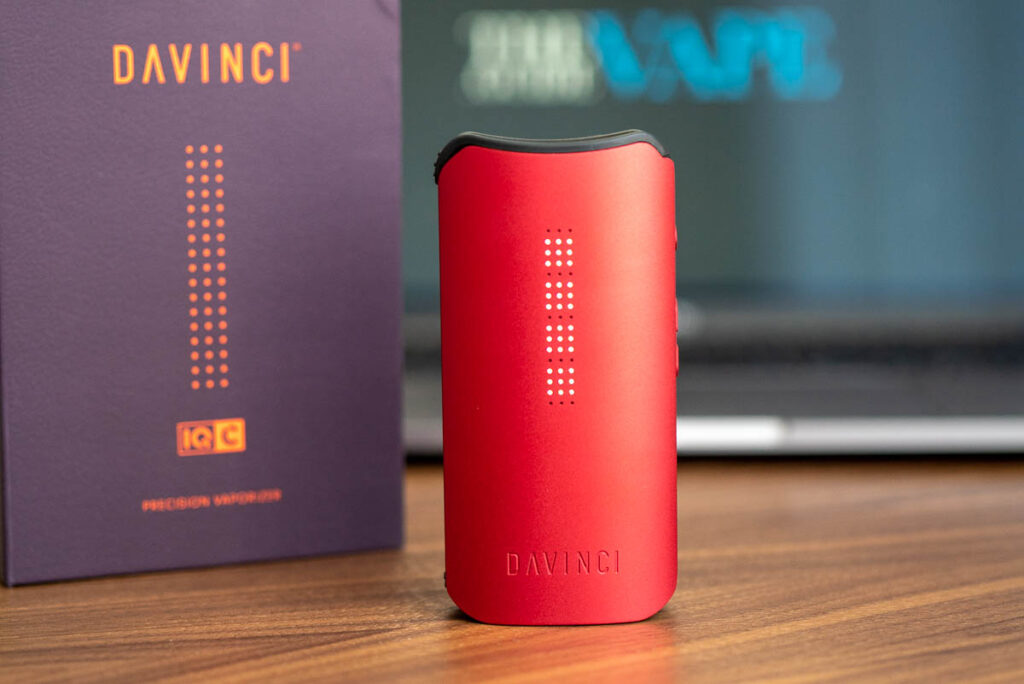
One of DaVinci tech’s cornerstone values is relentless innovation. Couple that with the brand’s penchant for product design consistency and you get a whole suite of well-performing and well-designed devices. DaVinci’s latest release (July 2021), the DaVinci IQC (review | buy), and the much smaller Miqro both have replaceable batteries, zirconia air path, an adjustable oven pearl, precision temperature, and smart path technology. While they follow a signature format and look similar on the outside – each device has its own unique target market and defining features.

At first glance, the Miqro could easily be mistaken for a DaVinci IQ2 (review | buy) – which is also the IQC’s older brother. The Miqro is 33% smaller than the IQ2 and sports nearly the exact same boxy shape, a sleek look, and a zirconia mouthpiece. The differences (other than its size) between the Miqro and the IQ2 are only noticeable upon further inspection- the IQ2 has a glossy finish, while the Miqro’s sandblasted aluminum body is matte. The LED grid on the Miqro is also smaller and its 900mAH battery life is a big jump from the IQ2’s 3500.
The DaVinci IQC is a refreshed and updated version of the IQ2 and it retains the brand’s signature design elements such as a lightweight and portable body, LED light display, and zirconia pearl. Simply speaking, it is the IQ2 without the air-dial and dosage control. Several of the former zirconia pieces have been replaced with hi-temperature silicone parts, and the aluminum lids have been swapped out for antimicrobial polymer lids. It’s constructed with the brushed aluminum and has the same matte finish as the Miqro.
The Miqro and the IQC are both compatible with dry herb and the IQC may also be used with dab and other solid concentrates. Although to maintain the longevity of your devices, it’s definitely best to keep your dry herb and wax pen separate. For this comparison – I’ll be focusing on each device’s performance with dry herb. I tested them with THC herb from my local dispensary and CBD herb from In-Hemp.
Kit and Accessories

Both devices have similarly decked kits – with everything you need to start using the device plus a few extra accessories to improve your experience (such as 2 different mouthpieces) and cleaning tools. The Miqro however, is available in two kits; a Standard Kit for $99 and the Explorers Collection which costs a little extra at $119.
The Standard Kit contains all the basics you need to get started and at $99 it’s definitely affordable. The Kit includes a 18350 battery, two zirconia mouthpieces (one recessed and one extended), a micro-USB charging cable, and a cleaning kit. The Explorers collection comes with a spare 18350 battery which fits in a keychain canister that also has a built-in smell-proof herb compartment (that holds enough extra herb for a session or two). You also get a silicone protective sleeve, a grinder coin, the same two mouthpieces, the charging cable, and a cleaning kit.
Design and Features

As mentioned earlier, both devices share a similar look that’s signature to the brand. They both sport a minimalist rectangular box-shaped body with rounded edges. The form factor of both devices are also exactly the same:
- A top mouthpiece section (recessed and extended)
- separate vapor path (made of zirconia)
- removable top-loading battery
- bottom-loading ceramic oven with the zirconia pearl.
Both devices also have the DaVinci signature LED grid on the front, and on the right are three tactile buttons – one for power, and for turning the temperature up/down, or toggling through the smart paths.
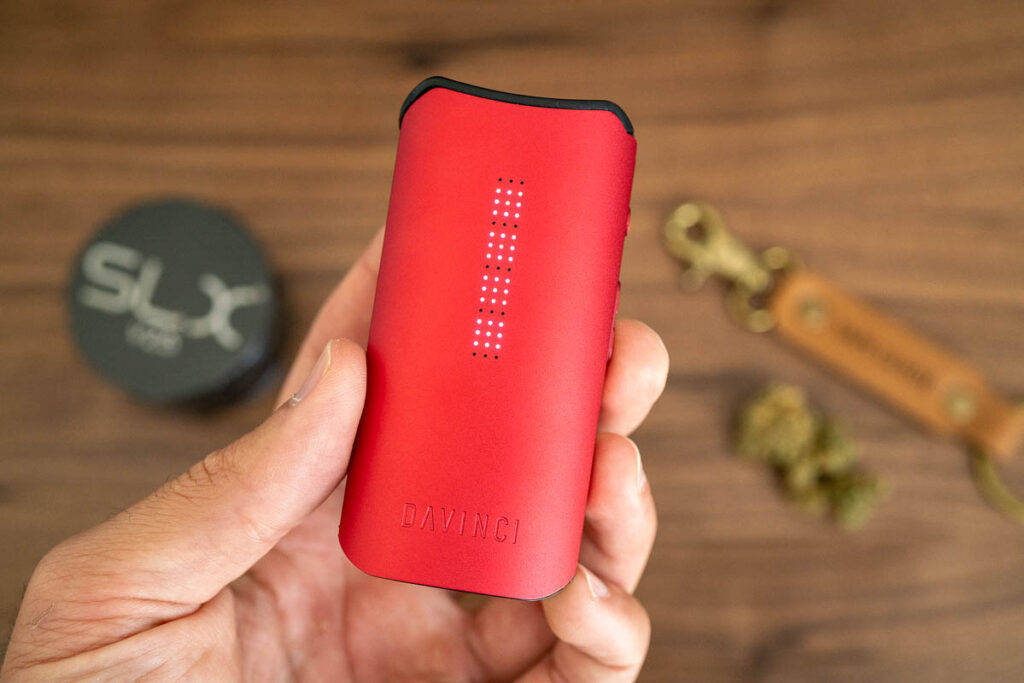
The Miqro is a lot smaller and looks the most similar to the IQ2. It’s the same color throughout – including on the sandblasted aluminum lids, making it more minimal in design. At only 3 inches tall, it’s one of the smallest dry herb vaporizers on the market. One of the design changes DaVinci made with the IQC is replacing the formerly aluminum lid with high-temperature silicone. This black silicone lid outlines the entire top of the device, making it look a lot more rugged as opposed to fully sleek like the Miqro and IQ2.
Both are bottom-loading devices and this is pretty cool especially for the 3-inch Miqro. This makes the airpath relatively long on such a small device. Most smaller devices have short airpaths and the oven is usually located right under the mouthpiece, just like on Pax 3 (review | buy).
Zirconia Pearl
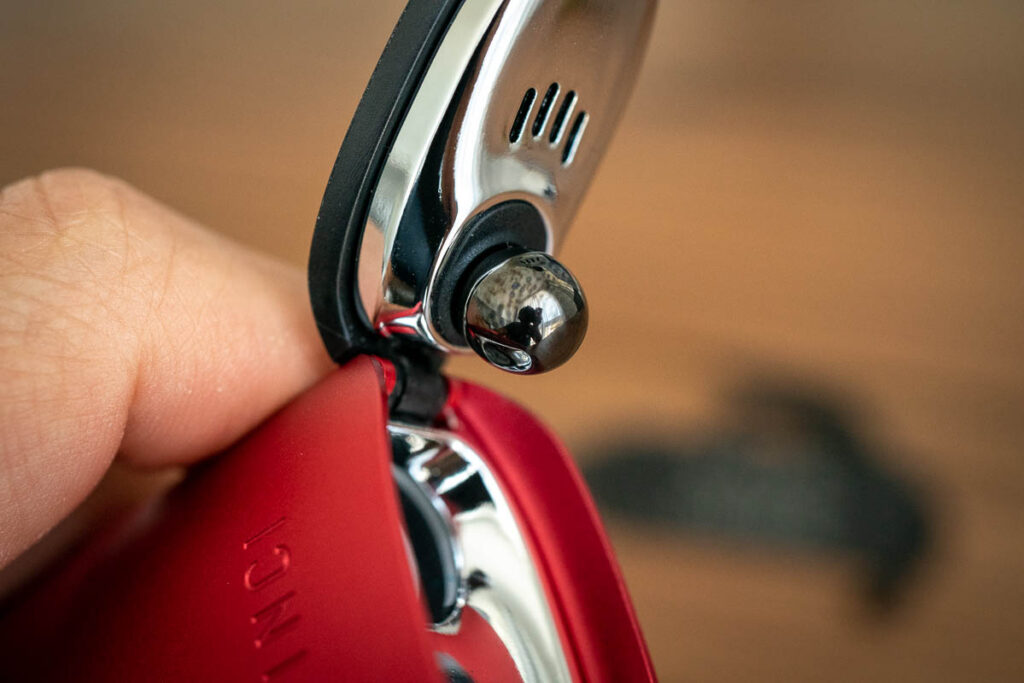
The bottom lid of both devices opens to expose the ceramic oven and the adjustable zirconia pearl. The pearl is something that’s in all DaVinci devices and it sits on a short thread, allowing you to screw it out a bit. Helping pack the material tighter and effectively reducing the amount of space in the oven. This reduced space makes it even easier to microdose on the Miqro- which already has a small .25g oven capacity, to begin with. Simply fill the oven halfway and extend the pearl halfway down to fill the remaining chamber space.
Since both the Miqro and IQC are conduction vaporizers, it’s best for the material to be as close to the internal heating element as possible and the zirconia pearl helps with that. The pearl heats up to create a more even heat distribution, therefore creating a more even “burn” of the herb.
Battery
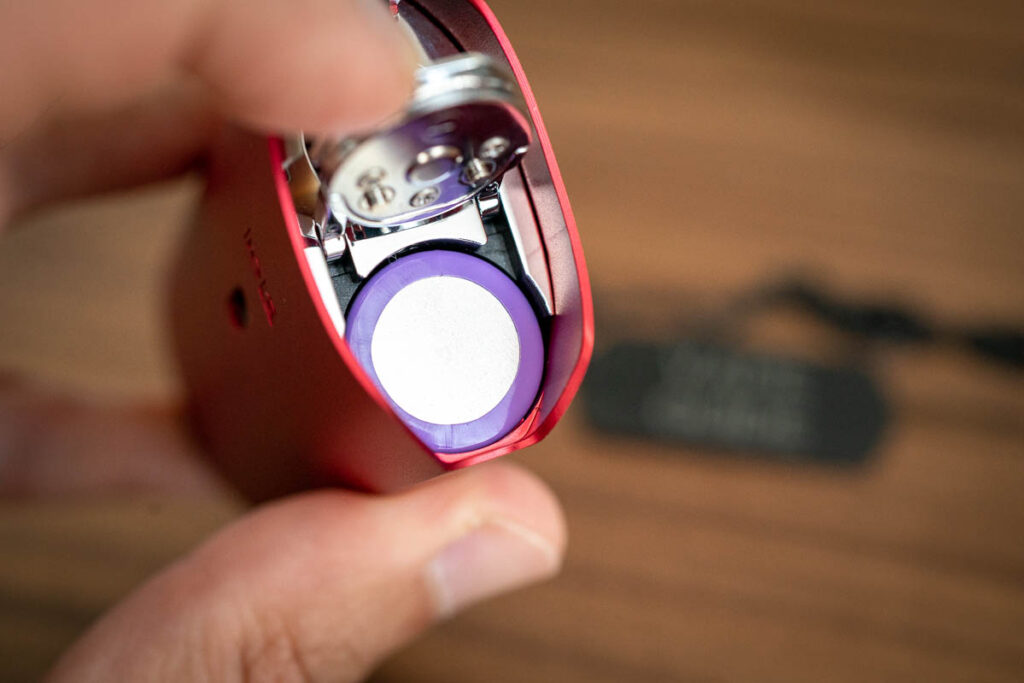
There’s a reason that the Miqro Explorers kit comes with a spare battery. The 900mAH replaceable battery it comes with doesn’t last very long. It’s good for about half an hour of use or 3-4 sessions at best -that translates to a few occasional draws throughout the day. When it does die – it takes 2 hours to charge internally via the included micro-USB wire, if you’re looking for a quicker way to charge your batteries – it only takes 45 minutes via an external charger (buy on Amazon).
The IQC on the other hand has much better battery life. Its replaceable 18650 battery lasts for about an hour of continuous use or 6-8 sessions. It still takes 2 hours to charge via USB-C, but you may always opt to have a spare battery ready (buy on amazon). If battery life is important to you, then the choice is clear – the IQC is the winner here. It has a longer battery life, for the same amount of charge time.
Mouthpiece

The Miqro and the IQC both come with the same mouthpiece options- a flat one that comes pre-installed in the device and an extended mouthpiece that can also be used as a 10mm adapter for pipes for added water filtration.
The flat mouthpiece is definitely more discreet – But using the raised mouthpiece does feel more natural. It has less draw resistance and the slight increase in the airpath cools down the vapor even more- which is great in small devices and a definite need for the Miqro.

Although these mouthpieces are identical in shape and form, they differ in material. The Miqro’s mouthpieces are made from zirconia which is an advanced, pure material that has similar properties to ceramic. While the IQC’s mouthpieces are made with hi-temperature silicone which is better at staying cool even after successive uses. The magnet that secures the mouthpieces have also been made stronger and more secure on the IQC.
Ease of use

The IQC and Miqro (and even the IQ2) have identical onboard controls for temperature controls (in precision mode), smart paths, and boost mode. To turn either device on, simply click the power button 5 times. To use Miqro and the IQC on ‘precision mode’, click the power button once and use the arrows to set the temperature. Precision mode keeps a constant temperature in the oven throughout the session and the devices vibrate once your desired temp is reached.
They also have the same LED grid on the front that displays the current temperature levels, device status, and battery level. To dim the LEDs, activate “stealth mode” by pressing the power button together with the down arrow button.

However, since the Miqro is smaller, it has fewer LED lights at 15, while the IQC has 15. This smaller display can only show one number at a time, while the IQC can show the full number at a glance. Which makes using the Miqro in precision mode a bit cumbersome. You can hold the “up” button on the IQC to change temperatures and it’ll get there quick, but it’ll take 3x times the hold time for the Miqro to do the same thing.
Performance and Vapor Quality
These two devices may look almost exactly the same, but they differ greatly in performance. For conduction vaporizers, the vapor produced by the Miqro and IQC was relatively thick- and I’d credit this to the zirconia pearl which helps regulate oven temperature.

The Miqro heats up pretty quickly and goes up to its highest setting in under a minute and takes much less time to go on to the first Smart Path setting. You’ll be able to get a good amount of dense and flavorful vapor during the first two draws, but eventually, the device succumbs to its size.
Despite the longer-than-usual vapor path- the vapor of the Miqro eventually gets quite hot. The flavor quality is pretty good for such a small vape, but you lose it to the warmth of the vapor. Using the extended mouthpiece helps, but it only does so much to counteract the device’s overall size.
The IQC heats to temperature in about 20-30 seconds and produces clean, dense, weighty vapor, and preserves the delicate flavors of the material. As the improved version of the IQ2, there were definitely high expectations for this device- and it delivered. The vapor quality produced by the IQC is just as good as its predecessor and might just be the most potent vapor out of any vape available right now.
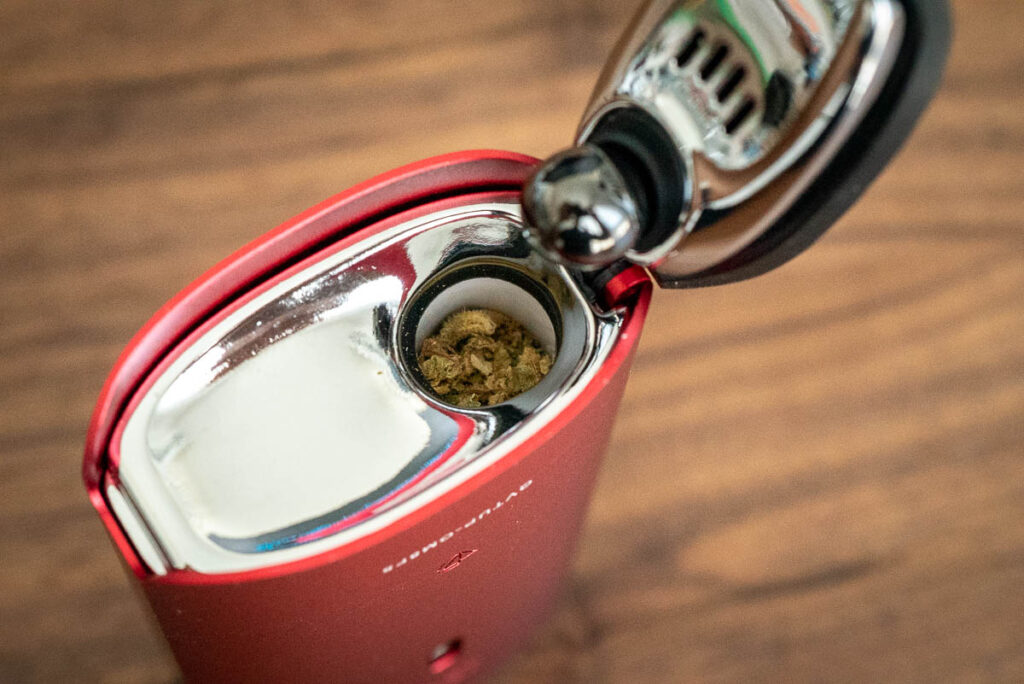
The IQC’s oven is also similar to the IQ2, it’s funnel-shaped and makes loading a breeze since the material just slides in. For an even better loading experience, I highly recommend the use of an herb spoon (buy on Amazon). DaVinci also sells dosage pods on their website, which can be pre-loaded with herb and stored in a holder, and then just popped into the oven while on the go, eliminating the need for manual loading. I also highly suggest using a great grinder such as SLX (review | buy).
Smart Paths
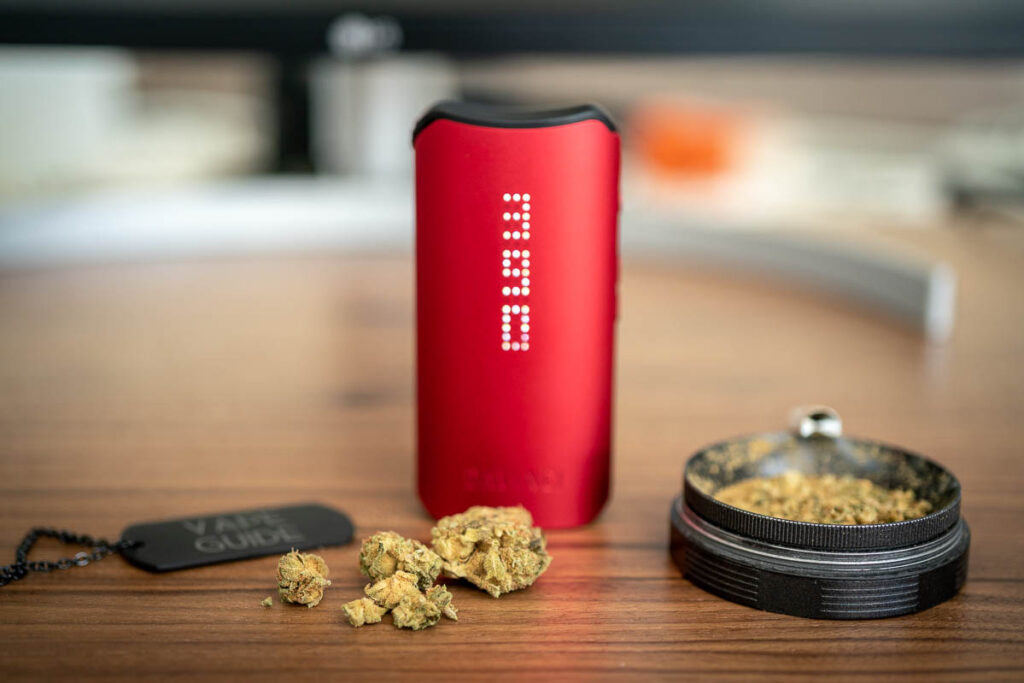
Smart Paths are a proprietary DaVinci feature that gradually increases the oven temperature during your session (for 8 minutes). The Miqro’s controls are all in the device itself while you can set the IQC’s smart path temperature settings via the DaVinci smartphone app. Once you’ve set your temperatures, you can then opt to use the device independently from the app.
By default, however, these are the pre-set temperatures and the only temperatures you can use on the Miqro
- Mode 1: starts at 350F and increases to 370F
- Mode 2: starts at 370F and increases to 390F
- Mode 3- starts at 390 and increases to 410F
- Mode 4: starts at 410 and increases to 430F
Bottom Line

There is simply a lot to think of if you want to use the Miqro all day, to its fullest. The Miqro simply gets too hot to hold while in use and while the sleeve that comes in the Explorer’s Kit definitely helps, the battery then becomes the next issue to deal with.
If size is a concern, then maybe get the Miqro – but really it’s not too big of a difference in size between these two. You can take the IQC wherever you want to take the Miqro. There’s a $100 price gap between the Miqro and the IQC, and that’s a sizable amount to consider if you’re choosing a vaporizer.
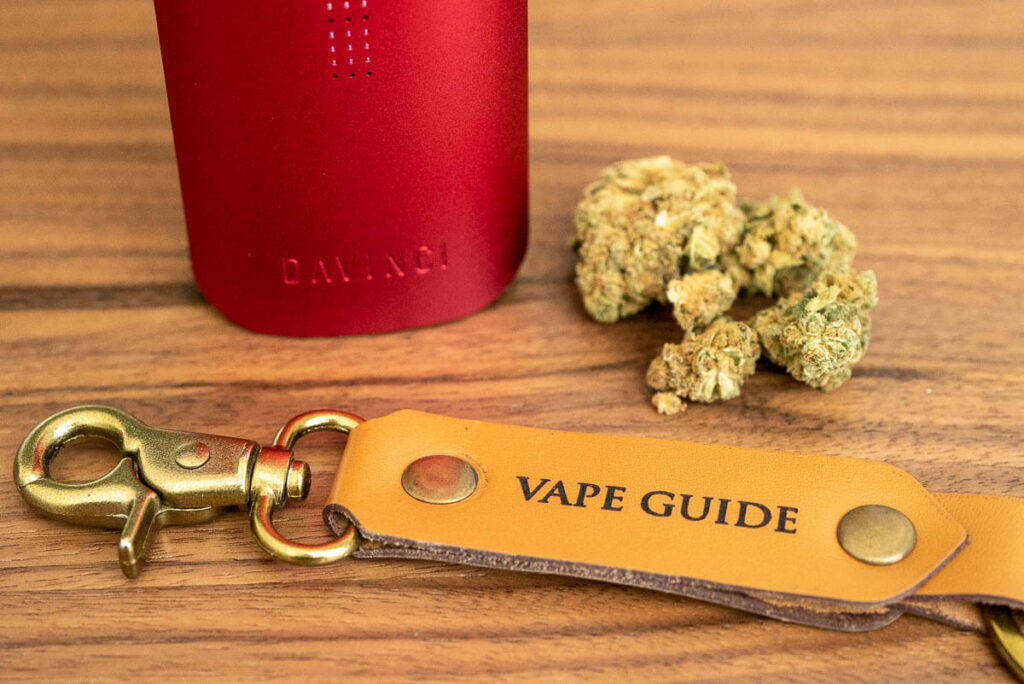
The Miqro is best for small, one-off sessions throughout the day and is definitely made for personal use. While the IQC is the more powerful, better performing older brother. The high-temperature silicone pieces do wonders with heat dissipation and the resulting vapor is simply superior – and that’s very worth the price & size difference. If you’re still unsure, there’s definitely something worth looking at on our list of the best dry herb vaporizers of [year]